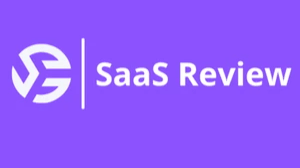Digital Transformation continues to increase the adoption of disruptive-technologies such as Artificial Intelligence (AI), Internet of Things (IoT) and big data, and technology solutions like Enterprise Resource Planning (ERP),Customer Relationship Management (CRM) and Application Management systems (AMS). On the other hand, Software-as-a-Service (SaaS) is touted as one of the key digital transformation accelerators, promising improved business agility, increased productivity and lower operating costs.
As tech leaders continue to look to validate the ongoing shift to SaaS-driven applications from traditional software systems, it is imperative that business decision-makers understand how they can leverage SaaS more effectively for meeting their business goals and accelerating digital transformation.
Four ways SaaS solutions help businesses drive digital transformation faster:
Improve Business Agility
SaaS solutions enable unmatched business agility in two direct ways. First, with effortless scalability, SaaS can meet the ever-shifting demands of a business, whether that is scaling up for business growth needs or scaling down for restructuring systems. The second way SaaS solutions provide business agility is through constant improvements and updates. While standard software deployments require renewal licenses and version upgrades to let you access the latest technology the vendor offers, SaaS solutions simply get better with
regular updates. Thus, the combination of limitless scalability and constant functionality improvement with SaaS solutions helps future-proof businesses as well as accelerate their digital transformation journey.
Boost Customer-centricity
As organizations switch to SaaS, their solution vendor becomes their partner, giving them a range of abilities to improve their customer-centricity and customer relationship. Improved collaboration capabilities add great impact on value chain relationships. The collaboration improvement capabilities provided by SaaS can be in many forms depending on the type of application and are enabled by advanced software architectures like multi-tenancy and non-relational databases. SaaS provides an improved ability to assist customers in the field leveraging augmented reality. Thus, the improved value-chain
collaboration capabilities gifted by SaaS solutions enable businesses to improve their services, products and processes, aligning correctly with their digital transformation goals.
Improve scalability and accelerate innovation
Scalability in SaaS is huge, as the number of users who can access the software can be
increased effortlessly. SaaS software can reduce hardware requirements and can grow on cloud infrastructures. One of the major benefits of the SaaS model is accelerated innovation, which allows businesses to provide their customers with smoother and faster access to cutting-edge technologies. It omits the time and costs consumed by traditional software for implementation and updates.
Improve mobility
With the SaaS model, businesses can effectively provide their employees with remote
access to software tools and databases without requiring them to install any software or hardware. Additionally, SaaS eliminates the need for virtual private network access. This edge that SaaS provides is highly crucial for businesses to improve operational effectiveness and support a hybrid work model.
Reasons why businesses should adopt SaaS solutions to stay competitive:
Total cost of ownership
A SaaS subscription eliminates a lot of costs borne by the user in on-premise software and covers the essentials, which not only results in a more affordable total cost of ownership but also reduces complexity and overhead.
Resourced costs
According to Gartner, the annual cost of maintaining and operating on-premise software
can be up to four times the initial investment and can consume up to 75% of an organization’s total IT expenditure. Whereas, the SaaS model is just the opposite of that and comes with a one-time investment format.
Try before you buy
Most modern SaaS companies allow their customers to test or pilot the software initially to check whether it can add any commercial value to their business. This approach ensures that your money is invested in the right solution that can help get the desired results.
Data-Driven Insights and Decision Making
Businesses are drowning in data, but often starved for insights.Traditional analytics tools can show you what happened, but AI-powered SaaS can help you understand why it happened and what might happen next. Business intelligence platforms infused with AI can process colossal datasets, identify hidden correlations, and present actionable insights in an intuitive way. This allows for faster, more informed decision-making, moving businesses from gut feelings to data-driven strategies. By turning past behaviors into forward-looking insights, predictive analytics helps SaaS providers make smarter strategic decisions and deliver more targeted, effective services.
Final Thoughts
The digital transformation journey is an ongoing process that requires adaptability,
innovation, and continuous improvement. SaaS has emerged as a game-changer,
accelerating this transformation for organizations of all sizes and industries. Its scalability, cost-effectiveness, seamless updates, collaboration capabilities, and data-driven insights are reshaping the way businesses operate in the digital era.
Embracing SaaS empowers organizations to be more agile, responsive to market changes, and customer-centric. As technology continues to evolve, SaaS will remain a key
driver in shaping the landscape of tomorrow’s business world.
